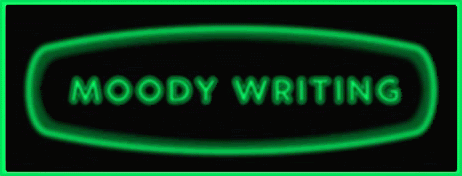Tension is a key element of
drama. Tension is a question. It’s an outcome you want to know. It’s
anticipation. Tension comes in different sizes and shapes.
“There’s a bomb on the bus!” is a
different kind of tension to “Are you waiting for someone?”
The big, explosive stuff (physical
or emotional) takes care of itself. You may need to manage it, but tension will
be present. My daughter’s been kidnapped!
— very hard to underplay.
This post is about working
tension into smaller, more intimate scenes.
Tension requires at least two
points of resistance, pulling in different direction.
If you hold a piece of string
from both ends and pull, you create tension. If you only hold one end, you can
pull as hard as you like, the string won’t go taut.
This means it’s much harder to
create tension when you only have one person in a scene. Internal monologue
where the character worries and speculates about their problems can suggest
tension, but it’s only when you identify who’s holding the other end of the
string that you feel the actual twang. And it’s only when you allow them to
pull from their end that you get a little drama going.
Let’s say it’s Darlene’s first
day at a new school and she’s concerned about how she will be received.
She’s in her bedroom, conflicted
about whether she should dress slutty like the cool girls, or straight-laced
and hope people like her for who she is, not how much skin she flashes. If she
is sure of herself and knows which way to go (doesn’t matter which she chooses),
then there’s no tension. If she is unsure and can see pros and cons for both
sides, then what she chooses to do becomes a question with no obvious answer. There’s
tension there.
But the real tension is in
finding out what happens when she gets to school. How will her decision pay
off? Internal monologue tends to deal with stuff that’s already happened or
will happen in the future. This highlights emotion, but it undercuts a lot of
the tension.
It’s like the difference between
a bomb disposal expert worrying about the dangers of diffusing bombs, and
actually having to cut the wires with the timer on three seconds.
Let’s say Darlene is in her bedroom,
checking the FB pages of the popular girls at this school to find out what’s
cool to wear, and the two most popular girls are making completely different
suggestions. Who should she listen to?
Here, instead of splitting the
character into two, I’ve brought in the views of secondary characters, not the actual
characters, just their views. This way you have a definite and tangible source
of tension the MC can strain against.
The problem here though is that a
proxy character, one who is only semi-present, is limited to one approach. They
can’t react or respond or up the ante. They are fixed in what they can do,
because they aren’t really there. It can work, but it’s very easy to rig the
game so the MC gets off easy. Here’s a problem, here’s a solution, problem goes
away.
So, Darlene’s at home feeling
uncertain, what if we physically bring in secondary characters? The easiest
would be to bring in her parents. She tries to convince Dad to drop her off in
his BMW convertible rather than Mom in her crappy Volvo.
Now the dynamic requires her to
not only think about what might happen at school, but it pushes her to do something
about it right now. And whatever she wants, the other characters will also have
their own wants, which may not be compatible with hers.
You bring other people into the
scene, your MC becomes active, she wants something from them, she has to work
to get it, the stakes are clear. Will it work? Will she succeed? How will the
other players counter her proposals?
And this is the key to creating
tension, that it is in the present. Even though anticipation is a big part of
tension, it’s anticipation of what’s going
to happen, rather than of what might
happen.
Darlene’s tension in the last
example isn’t based on what the kids will think of her at school, even though
that is the source of her general anxiety, it’s can she get what she wants from
her parents. It’s the immediate problem in front of her and how to get round it,
and how it’s linked to what’s at stake overall, that holds the attention.
If you found this post useful, please give it a retweet. Cheers.








































































































13 comments:
Love that image of needing two people pulling on the string in order for there to be tension. It's definitely something I'm going to keep in mind as I continue with my Camp NaNo ms.
One character tension lasts for about one paragraph unless you're really good at it. I'm not!
Damn...that's a sexy car. I think I do well with tension. I'll have to ask my editor to verify it.
@Madeline-you can have more than two, if you've got a long enough piece of string.
@Alex-it's always amazing what some writers can do with one character. Not me either though.
@Michael-Books Make Writers
Very helpful Mooderino. Great examples of the different ways to create tension. I agree about the two characters. I like to create tension through dialogue as much as possible.
I don't know whether I am good at creating tension. I am trying to learn as much as I can about it. My CP's are a great help. They let me know the low tension scenes and I work at them.
@Denise-I think there's always room for a little more tension.
@Rachna-definitely much easier to see it in other people's work.
I love a good scene/chapter/book with tension. It really is the thing that puts you on the edge of your seat. Great thoughts here, as usual!
Very good point about keeping tension immediate. Internal debates about the future go flat pretty quick.
@Lydia-cheers.
@LD-I think you can have those thoughts in addition, but on their own they tend to go nowhere.
What I really love is tension by implication or innuendo. My second best is reading how desire is thwarted in some kind of action scene. You are so right. Those scenes built around conflict--subtle or overt--are essential to a story.
Great post.
Great post! I couldn't have summed up the topic of tension better myself. :)
@clee-cheers.
@David-thanks!